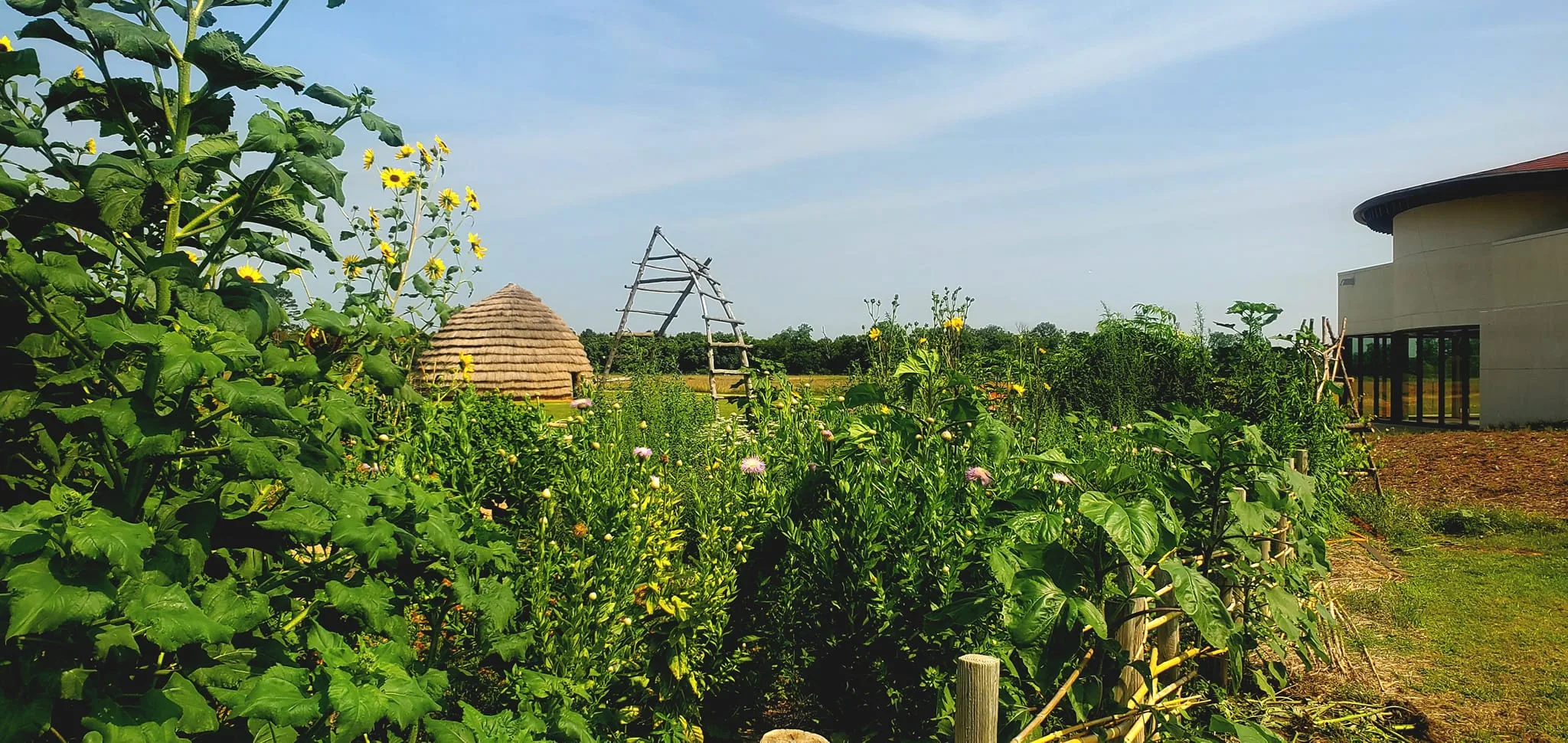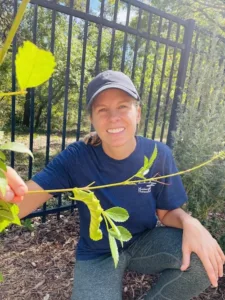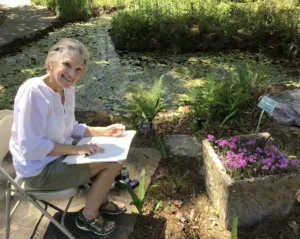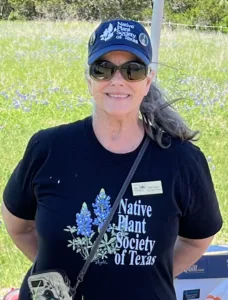
From the Awards Committee:
Every year the Native Plant Society of Texas recognizes organizations and individuals that advance our mission. Their work will be honored during our 2023 Pineywoods Symposium to be held November 9-12, in Nacogdoches, Texas. Have a look at the extensive overview of all symposium activities on our website. You can attend in person or virtually by registering here.
Hear the stories of extraordinary people from all over Texas who have done wonderful things that champion our mission.
Our Annual Awards Banquet on Saturday, November 11 will feature a presentation telling the stories of the 2023 honorees and awardees in their own words. We will hear from Benny Simpson Fellow honorees and State Board, Memorial and President’s awardees. The evening is a fun and exciting event that we hope you will attend.
Benny Simpson Fellows Honorees

The Fellows Award is a high honor in our Society and is presented to individuals whose work enriches the Society at the state or chapter level. They are chosen by the membership from a list of members with ten years of continuous commendable service. This year’s Fellows are Fonda Fox, Deedy Wright, Kathy McCormick, Teresa Maslonka and Lee Marlowe.
State Board Awards: Appreciation, Native Star and Digital Media
Award of Appreciation goes to a group dedicated members who have enriched public communications on our website and help fulfill our mission on the utilization of native plants through the development of Native Landscape Plant Database, a searchable database that includes the details of native plants for landscaping and indicates the ecoregions they thrive in naturally. The State Board thanks Claire Sorenson, Stephanie Long, Mark Richert, Karl Hanz, Kate Stykes and Jon Lienhard for this effort, with a shout out to all NLCP volunteers who created the plant list spreadsheets for classes. This team has created a database in which each plant citation includes plant description and photographs, growth form, growing conditions, leaf retention, seasonal interest, wildlife benefit, blooming season and maintenance suggestions. As an added bonus, the database includes the scanned herbarium collection of plants that was created by Marie-Theres Herz of the Dallas NPSOT chapter and photos of key NPSOT photographers such as Benny J. Simpson and Paul Montgomery. Jon Lienhard and Claire Sorenson spent many hours of research, discussion and development coming up with the ecoregion map – a huge benefit of the database. Plant signs which may be used by Society chapters may be easily downloaded from the database for use during plant sales and NICE activities.
Native Star Award is for a specific act of conservation or public service in the field of Texas native plants. The Caddo Mounds State Historic Site: is recognized for the Snake Woman’s Garden. This demonstration garden features native plants that would have been cultivated by the Caddo people for food and medicine. Volunteers, visitors and educators are invited to actively participate in the garden’s maintenance, regular programs and educational events that focus on the importance of these plants to indigenous cultures. In addition, the site hosts regular foraging walks that feature edible native plants, and works to maintain “crops” of native plants that occur across the site, including heal-all, muscadine grapes and river cane. They are working to restore native prairie grasses to the site’s open habitats. The Snake Woman’s Garden is one of the field trips for this year’s symposium.

Digital Media Award recognizes outstanding digital publications featuring Texas native plants. Haeley Giambalvo for her website “Native Backyards” which helps folks grow native plants in their yard. Advice and recommendations provided are easy, friendly, positive, and encouraging which leads to more success in growing natives. Haeley provides weekly updates regarding plant availability, wildlife value, advice on designs, maintenance, spacing, pruning, watering, planting, and more! All with photographs that illustrate the landscaping principles that help native plants thrive.
Memorial Awards: the Society has seven awards that help us to stay connected to the people from the past who were important in the study and advancement of Texas native plants and to people who founded and developed our Society. Through these awards we show our respect and admiration for those who are continuing these efforts today.

The Mary Jo Laughlin and Dr. Eula Whitehouse Memorial Award is awarded for visual art that illustrates, interprets, or promotes Texas native plants. Lotus McElfish for her watercolors and prints of native wildflowers prints of native wildflowers in Texas and beyond including documenting Texas’ rare and endangered species. She sold and displayed her watercolor/prints at the Lady Bird Wildflower Center as early as 2003. She currently works in the conservation department of the San Antonio Botanic Garden where she is documenting Texas’ rare and endangered species.

This is an ongoing venture that catalogues all aspects of the plants including seeds and fruits, as well as flowers and leaves and overall structure. Motivated by a strong sense of environmental responsibility and jumpstarted by a grant from American Society of Botanical Artists in 2005, this artistic adventure has taken her to creating watercolor plant portraits of the endangered and native wildflowers of Texas and, more recently, also of Colorado, her home state. They may be wild, but their very existence is in delicate balance and some are so ethereal that the bloom only lasts a day. Her biggest challenge is not only locating their natural or protected habitat but also to time the visit to capture the plant’s bloom in its fullness. In truth her favorite part of these field trips are hiking in, clinging onto ledges, meeting, and working with local botanists, landowners, and park personnel.
The Shirley Lusk Memorial Award honors a community scientist for collecting and preserving Texas native plants for public education by providing outstanding contribution of herbarium vouchers. Ken King has collected close to 1000 specimens primarily in South TX, documenting new species in his work with Dr Alfred Richardson and his books. Ken has documented new populations of plants rare to south TX, or rare in TX, further increasing our knowledge of Texas’ flora. Collections are at and University of Texas at Austin, Botanical Research Institute of Texas, Harvard, and Texas A & M.
 The Carroll Abbott Memorial Award is for writings in the popular vein on Texas native plants. Lynne and Jim Weber have been selected for their book Native Host Plants for Texas Moths . This user-friendly, heavily illustrated follow-up to their highly successful Native Host Plants for Texas Butterflies describes over 100 native, larval host plants for moths in Texas. More than 150 moth species are illustrated in the book, both larval and adult phases, with one to two species for each of the larval host plants. Native Host Plants for Texas Moths will prove to be an informative introduction to this less widely known world of moths and their host plants, providing a better understanding of how to discover, support, and protect these important insects. Why moths? In Texas, moth species outnumber butterfly species by about 15 to 1. More moth species than butterfly species are polyphagous, or use more than one type of plant as a host plant. The book highlights more than 100 native host plant species, including some that are often overlooked or treated as ‘undesirables’, reinforcing the value of each native plant species. All this aligns with the mission of our Society by encouraging the planting of both native host and nectar plants in yards and gardens thus increasing/restoring the availability of vital nutrients for these important pollinators – the moths! Find this lovely book on our Society’s website bookstore!
The Carroll Abbott Memorial Award is for writings in the popular vein on Texas native plants. Lynne and Jim Weber have been selected for their book Native Host Plants for Texas Moths . This user-friendly, heavily illustrated follow-up to their highly successful Native Host Plants for Texas Butterflies describes over 100 native, larval host plants for moths in Texas. More than 150 moth species are illustrated in the book, both larval and adult phases, with one to two species for each of the larval host plants. Native Host Plants for Texas Moths will prove to be an informative introduction to this less widely known world of moths and their host plants, providing a better understanding of how to discover, support, and protect these important insects. Why moths? In Texas, moth species outnumber butterfly species by about 15 to 1. More moth species than butterfly species are polyphagous, or use more than one type of plant as a host plant. The book highlights more than 100 native host plant species, including some that are often overlooked or treated as ‘undesirables’, reinforcing the value of each native plant species. All this aligns with the mission of our Society by encouraging the planting of both native host and nectar plants in yards and gardens thus increasing/restoring the availability of vital nutrients for these important pollinators – the moths! Find this lovely book on our Society’s website bookstore!

The Donovan Stewart Correll Memorial Award is for scientific writing in the field of the native flora of Texas. Rodney Bovey for his book Mesquite: History, Growth, Biology, Uses, and Management. Mesquite: History, Growth, Biology, Uses, and Management. Global problem or treasure? This question has accompanied the widespread and controversial mesquite tree wherever it grows and is studied around the world. In this comprehensive reference to the genus Prosopis, rangeland scientist Rodney Bovey has gathered and synthesized years of research in a book that reflects our current state of knowledge about the biology, morphology, and management of mesquite.
Environmentally adaptive, the mesquite is considered by many to be an invasive or a pest species, and Bovey addresses the concerns about mesquite encroachment worldwide. But he also explains its ecological importance in the prevention of erosion and desertification and in providing food and habitat for wildlife. In addition, Bovey traces the uses of mesquite by humans and discusses the economics of growing and harvesting mesquite. A handy guide to the names, locations, distributions, habitat, structure, and uses of several species of mesquite is included in this benchmark publication for ecologists, range managers, biologists, landowners, and students of agriculture and ecosystem science.

Nancy Benedict Memorial Award is for a specific of conservation or public service in the field of Texas native plants. Michael Eason for leading the team effort in finding the once thought to be extinct oak, Quercus tardifolia, in Big Bend National Park. This great find for oak conservation happened in May 2022. The recovery/rediscovery of Quercus tardifolia (Late-leaf Oak) thought lost to science was found by Eason’s keen eye. Michael Eason played a critical role in that discovery as part of a team of nine botanical researchers, funded by the Morton Arboretum and United States Botanic Garden, who carefully searched the park for evidence of Quercus tardifolia’s survival. This discovery was international news! This bright spot in the news cycle was heralded by all! Search for Quercus tardifolia and you will find a plethora of articles in many languages. Michael has true passion for plant conservation and for collaborating in the name of native plant conservation. The Society is enriched to have him as one of our State Botanists.

The Lynn Lowrey Memorial Award is for horticultural achievement. Jan and Bill Neiman and Family, Native American Seed – Few in Texas has done more to promote the preserving, collecting, growing and distribution through sales than has Bill and Jan Neiman and Family, Native American Seed in Junction, Texas. From humble beginnings and the loan of a shovel and a rake in 1973 the young nurseryman Bill Neiman began planting what people in Flower Mound and Dallas wanted in Bermuda and St. Augustine lawns. However, Bill observed the native plants seen on the roadsides and pastures did not notice the dry summers that turned introduced grass lawns into thirsty water demons. Seeing the need for better turf coverings Bill discovered natives by observing what plants could survive and thrive during our hot, dry summers. By 1988 Bill and Jan Neiman went all natives and no longer used or sold fertilizers and chemicals, using only natural products. Soon came a move to a farm in Junction, Texas where today they operate Native American Seed and preach the gospel of the benefits of native plants. They harvest relic prairies to preserve the genetics of those plants before these areas are lost to construction sites. The entire Neiman family and employees operate with the purpose of providing quality seeds and live roots of some plants, knowledge, and advice about the plants, and in their quarterly catalog not only beautiful photos of the flowers but seed and seedling photos as well. This catalog has thoughtful reflections of nature and habitats, and the understanding of wise observers of the land. This family has fifty years in the nursery trade and has become a leader in the promotion and conservation of our native grasses and wildflowers.
The Charles Leonard Weddle Memorial Award is for lifetime achievement in the field of Texas native plants. Will Fleming has been actively utilizing Texas native plants in his designs and projects since he went on his own after several years working for Lynn Lowery at Lowery Nursery in Conroe Texas. After starting Will Fleming Landscaping which included a nursery propagating numerous native species not available in east Texas particularly herbaceous species for utilization in his design projects and was a major supplier of herbaceous species in the early days of Mercer Arboretum’s March Mart. One of Will’s most well-known plant selections is Ilex vomitoria “Will’s upright Yaupon” which was awarded the first ever Lynn Lowery Award by NPSOT. Will has been written about in several publications over the years and a number of his designs have been included in a few of Sally and Andy Wasowski books, and not just the Texas books. With over 45 years of experience bring Native Texas Flora into horticulture/landscapes there are few more experienced. Will has particularly been an East Texas mainstay since the Society’s formation, as a friend of Carroll Abbott’s and Lynn Lowery it is possible he qualifies as a founding member.

Society presidents have the privilege to award honors at their discretion. This year President Linda Knowles awarded one President’s Award to Kim Conrow for generous support and leadership during service as President-Elect, President and Past President; from overcoming Covid challenges to holding onboardings and other accomplishments as a committees’ member and an executive officer.
The 2023 Pineywoods Symposium is just around the corner! If you would like to meet some these amazing people, or listen to them tell part of their story, register for the event either in person or online.


